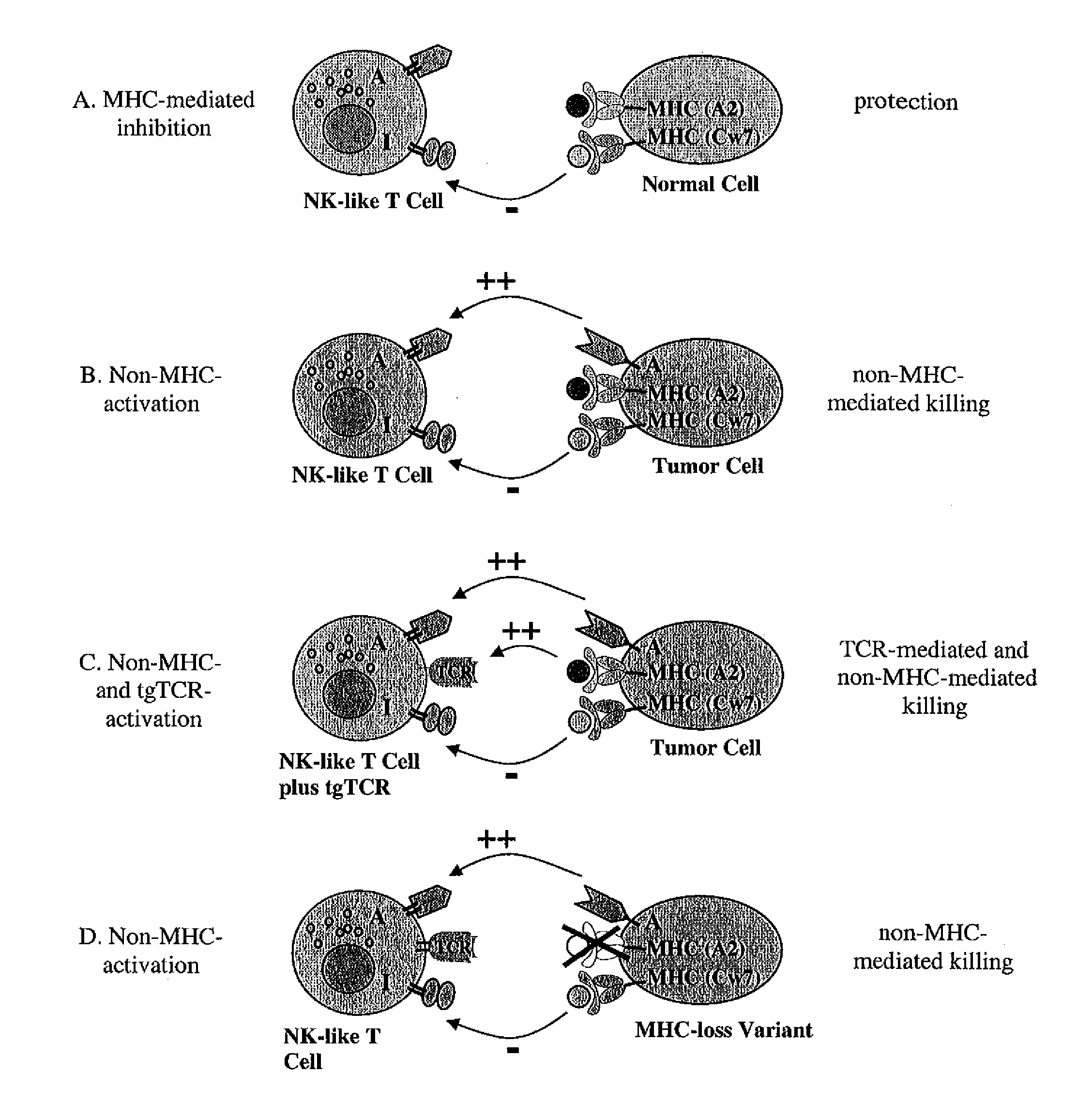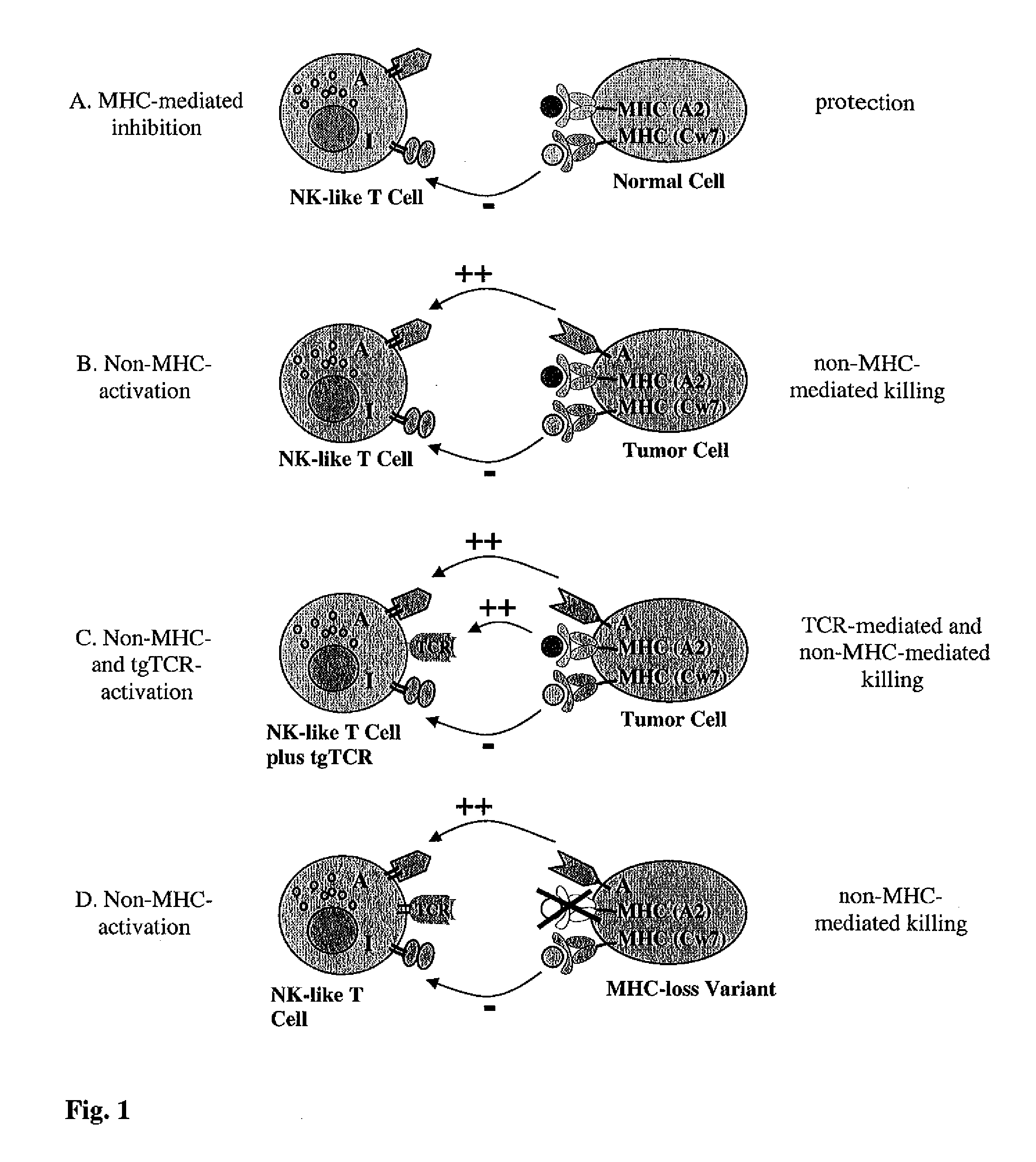Expression of transgenic t cell receptors in lak-t cells
- Summary
- Abstract
- Description
- Claims
- Application Information
AI Technical Summary
Benefits of technology
Problems solved by technology
Method used
Image
Examples
examples
Generation of Non-MHC-restricted Effector T Cells
Starting Lymphocyte Populations
Two sources of lymphocytes can be used for development of non-MHC-restricted effector cells. 1) Lymphocytes can be isolated from sterile peripheral blood samples using standard Ficoll gradient separation procedures. This process is suitable for obtaining up to 6×10e8 lymphocytes with blood samples of 300-500 mL or similarly, Ficoll separation of buffy coat cells can be used for isolation of lymphocytes. 2) When larger numbers of lymphocytes are required, they can be obtained through the process of leukapheresis followed by elutriation, allowing 10-20 times more lymphocytes to be obtained. Leukapheresis products are obtained, for example, through a 180 minute run using a modified mononuclear cell programme (Version 6.1), according to manufacturer's instructions, using a COBE Spectra (Gambro BCT, Lakewood, Colo., USA) instrument. Thereafter, counter-flow centrifugal elutriation is performed with the ELUTRA...
PUM
 Login to View More
Login to View More Abstract
Description
Claims
Application Information
 Login to View More
Login to View More - R&D
- Intellectual Property
- Life Sciences
- Materials
- Tech Scout
- Unparalleled Data Quality
- Higher Quality Content
- 60% Fewer Hallucinations
Browse by: Latest US Patents, China's latest patents, Technical Efficacy Thesaurus, Application Domain, Technology Topic, Popular Technical Reports.
© 2025 PatSnap. All rights reserved.Legal|Privacy policy|Modern Slavery Act Transparency Statement|Sitemap|About US| Contact US: help@patsnap.com


